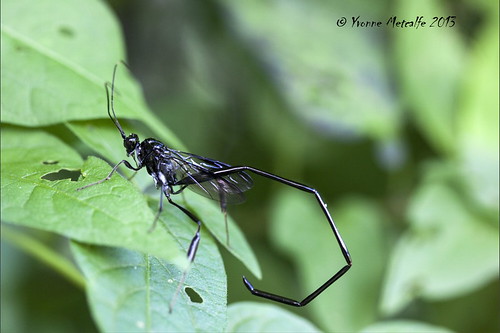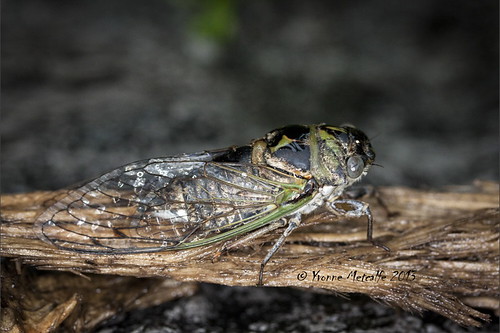This beautiful stingless wasp was found at the Earl Rowe campground in Alliston, Ontario. It was at least 1 1/2 inches in length (that includes the tail) if not more. I have never encountered one of these before, so was quite thrilled to capture it!
The male pelecinid wasp is quite rare. What's interesting about this wasp is that the females are able to reproduce without the help of the male. This type of reproduction is called parthenogenisis, which means "virgin birth" . This simply means that the female can lay eggs that don't require fertilization. These unfertilized eggs hatch more females, which explains why this species is predominantly female. For more info on this process, check out this site: http://bioweb.uwlax.edu/bio210/s2012/brummond_jord/reproduction.htm
I have combined my passion for photography with my passion for the great outdoors and all of its amazing creatures and creations.
Friday, September 6, 2013
American Pelecinid Female
Monday, September 2, 2013
Dogday Harvestfly on Wood
The Dogday Harvestfly (Tibicen canicularis) is a type of cicada. This one was found in my friend's backyard here in Barrie. Including its wings, it was about 1 1/2 inches in length (about 40 mm).
These creatures cannot sting or bite. It is believed that the dogday harvestfly doesn't even eat. They live underground as wingless nymphs for two to five years.There, they feed on root juices until they are ready to become adults. When ready, they emerge from the dark underground, climb the nearest plant and molt their skin. Once they have climbed out of their skin and their wings have dried, they make their way to the treetops to look for a mate.
You can hear the male cicadas singing in the summer ~ this is how they find their mates!Their call sounds like a circular saw cutting through wood.
I love it when I'm able to photograph these amazing creatures.... they are hard to find (eventhough I hear them all the time).
If you would ever like to find a cicada, the best way to do so is to look on the trunks of trees during the summer. If you are lucky, you might be able to find their empty skin shells (called exuvia). If you this, just look up the tree and see if the freshly emerged cicada is still there. I was lucky enough last year to find four emerging cicadas on a tree as Bass Lake, Ontario. What a thrill that was to watch and photograph!
You can check out my Emerging Cicada post from July 22, 2012 to see pictures of cicada nymphs transforming into adults. Very cool!

